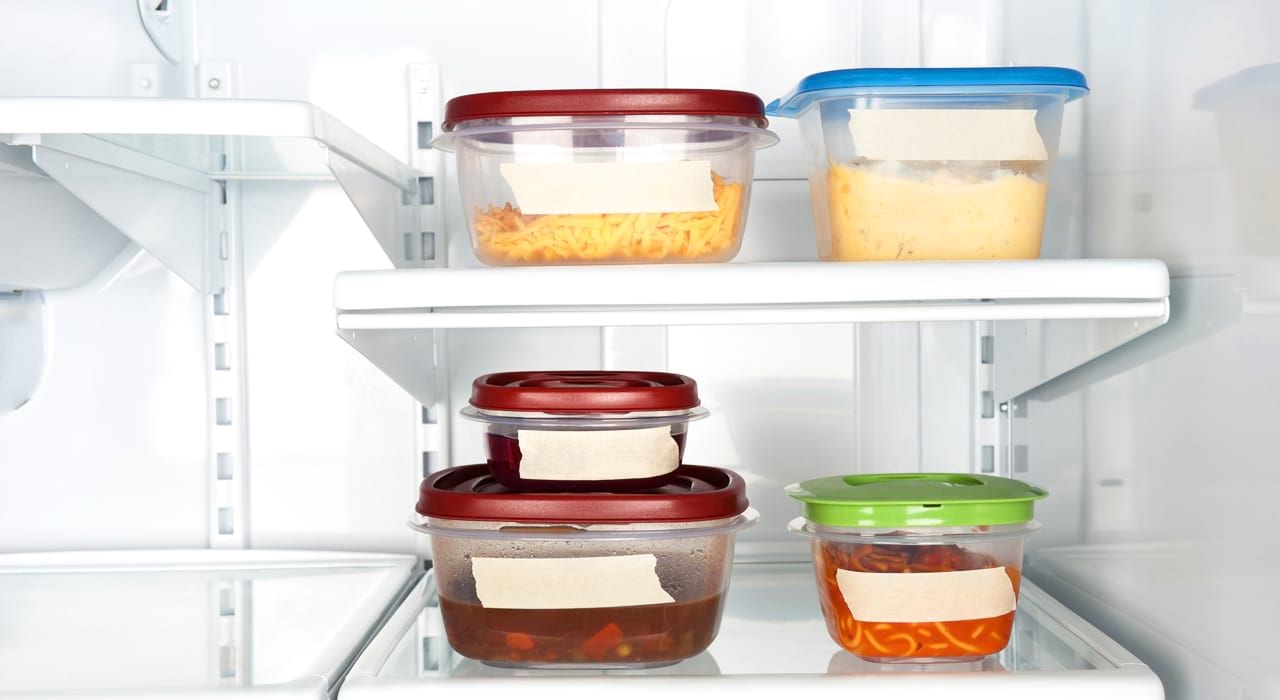By MACROS | Published on March 3, 2017
Sadly, most people view leftovers as a little unappetising and would simply prefer to move on to something new. If this sounds like you, you’re not alone because food waste is now reaching epic proportions.
Fortunately, this is a scenario that you can easily help to remedy with smart culinary adaptations. So cast aside your memories of that ‘everything stew’ you had in your youth because leftovers are an excellent gastronomic opportunity for the moderately skilled kitchen forager.
Here’s how to use them to save time, money and improve your health while making zero changes to your regular shopping list.
Why you should become a repeater eater
Tucking in to the same meal two nights in a row can be a touch boring to your taste buds, especially when something refreshing and new is just a fast-food phone call away. However, rehashing yesterday’s meal can actually be highly beneficial for health.
Take the case of the notoriously fast-digesting pasta that’s a sworn enemy to all those with weight loss ambitions. According to research at the University of Surrey, when it’s reheated after being cooked it becomes starch resistant and reduces a rise in blood glucose by a mindblowing 50% compared to pasta that hadn’t been cooked, cooled and reheated. That means it’s slower to digest and your body treats it more like fibre than a carbohydrate.
The benefits of hitting the refresh button on a previous night’s dinner don’t stop there because research in the International Journal of Food Science and Nutrition found that freshly cooked legumes, cereals and tubers also had much higher levels of these starches after cooking, cooling and then reheating. The humble sweet potato, for example, had a staggering 62% increase in resistant starch.
This particular kind of starch, found in leftovers, can help you stay lean because it helps you feel fuller for longer; it can also lead to lower fat accumulation and can improve the health of your gut bacteria. That’s an impressive rap sheet proving that in the case of many traditional carbohydrate sources, the leftovers could oddly enough be healthier than the original meal.
Coming in hot
The temperatures at which you cook your food have a huge impact on its flavour and nutritional value. In fact, researchers at the Department of Food Science and Nutrition at Zhejiang University, China, found that food cooked in extreme heat, like with stir-fries, increases its antioxidant and vitamin C levels.
What does this mean for the temperature at which you should warm up your leftovers? Well, America’s Food Safety and Inspection Service state that they need to reach 74°C, as measured by a food thermometer. This is especially true if you’re eating something that’s on the cusp of its throw-out date. Fortunately, you don’t have to do it with a rusty dial-styled gauge because the ETI Blue Therm Bluetooth temperature probe (www.shop.acoura.com, £95) can be placed into your food before sending the temperature to an LCD display or your phone.
Leftovers in particular are one foodstuff where you should err on the side of caution. To help you along, The Food Safety and Inspection Service also offers these bacteria-reducing tips for reheating in a microwave. It suggests that when microwaving, you should cover and rotate your food for even heating, and cover it to prevent moisture from escaping, since a lid will help destroy potentially dangerous bacteria. And when there are leftover leftovers they suggest you can safely refreeze after they’ve been reheated previously. Think of it as a nutritional bank deposit you can spend on those nights when you’re burning the midnight oil at the grind.
– RELATED: 6 Kitchen Hacks To Make Your Food Last Longer –
Leftover efficiency
Always follow these two simple rules before starting your food preparation:
1. Determine how big you want each meal before preparing anything.
2. Weigh everything out accordingly.
Take the example of something simple like chicken and salsa. If you want each meal to contain 200g of chicken (from which you’ll get 46g of protein) and you need 10 meals, then you’ll need 2,000g of chicken and however much salsa the recipe calls for. If it requires 10 tablespoons per 400g of chicken then you’ll obviously need five tablespoons of salsa per 200g of chicken, giving you 50 tablespoons in total.
To figure out the necessary weights you could always try guesstimating, although I’d suggest you measure it with a kitchen scale. If you’re counting calories, then it’s easy enough to work out how many your recipes contain before you go to the grocery store. That way, when you buy your ingredients, you don’t overbuy things like fresh vegetables, fruit or herbs, which tend to cost a lot and go off the fastest.
Turf wars
Confused about the dates on your food’s labelling? Here’s the breakdown of how your calendar affects your stomach.
Plenty of people are still unsure as to whether or not you can snack on that pot of yogurt you forgot at the back of your fridge. Everyone knows this can be resolved by looking at the ‘use by’ and ‘best by’ dates on the packaging. But please remember that these don’t indicate food safety, as most people think; nor are they regulated by the Foods Standard Agency.
Research by the Waste & Resources Action Programme (WRAP) found that almost 49% of people misunderstand these labels, which results in a lot of good food being thrown out unnecessarily. “The truth is that you don’t always have to throw out the food that’s passed the ‘use by’ date if it hasn’t been left open,†explains Herbert. “So while these dates are helpful, they’re only reliable if the food has been kept at the proper temperature during storage and handling prior to purchase.
“Though many products now show ‘sell by’ or ‘use by’ dates, it doesn’t necessarily mean the foods have spoiled once these dates have passed. However, always check thoroughly when purchasing that the food looks in a good way. And for foods labelled ‘keep refrigerated’, choose only the ones that are cold to touch.â€
To help you along, it’s worth downloading the FoodKeeper app that helps you understand how different food storage methods affect a food’s shelf life. It offers storage advice for more than 500 foods and beverages that’ll keep you safe from harm.

